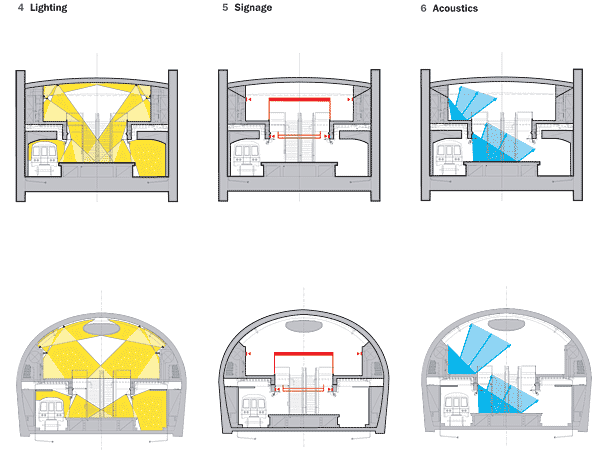Miracle on (and Under) Second Avenue
|
Although many alternatives are identified for every stage, all decisions must answer to a higher power-the assessments of the painstakingly researched environmental-impact statement. Because the SAS project is the beneficiary of federal funding, such an evaluation was required prior to construction in accordance with the National Environmental Policy Act. The client and the FTA recently completed the final environmental impact statement (FEIS). The document notes that although it is final with regard to starting construction, it can be amended as previously unaddressed issues or unanticipated complications arise.
Some of the many factors the FEIS takes into account are the project's potential effects on transit service and roadway congestion, and social and economic conditions. It also considers issues such as air quality, noise and vibration, energy and natural resource use, and contaminated material disposal. Mitigation measures to reduce localized impacts are described in the document. These are requirements, not guidelines. Assessments are based on "reasonable worst-case scenarios," which means that while there may be alternatives for any given process, the FEIS evaluated the one with the greatest potential for disruption. The assumption is that approved alternatives, by definition, fall within the limits set by the FEIS for the worst-case scenario.











